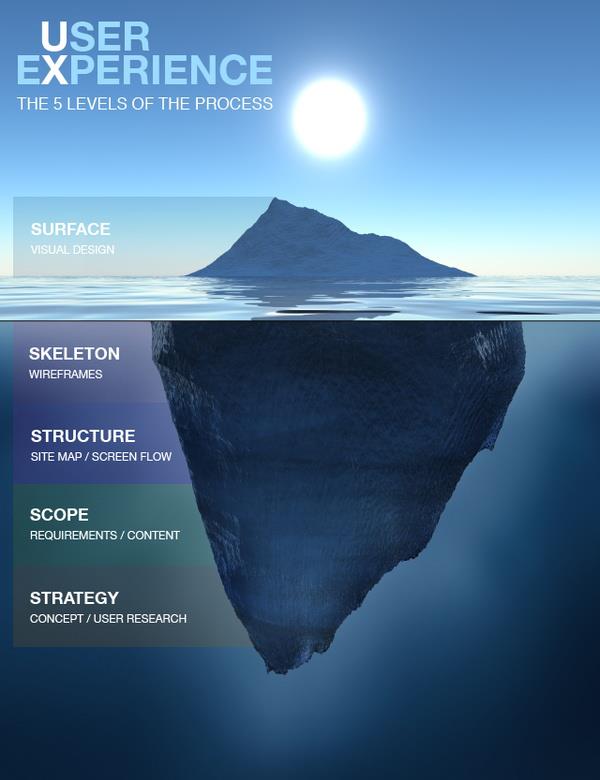
I’ve recently noticed a lot of different articles being written about what a UX designer is, and in honor of improving peoples experiences, I thought I’d throw in my two cents as well.
Let’s start broad: What is User Experience Design?
User experience design(UXD or UED) is the process of enhancing customer satisfaction and loyalty by improving the usability, ease of use, and pleasure provided in the interaction between the customer and the product.
The term User Experience designer is sometimes used to encompass all aspects of user experience design, ranging from user research, information architecture, usability testing, interaction design, and possibly even visual design. However the term can also be used for a UX designer that is specialized in one or a couple of the aspects. For example, a UX designer that specializes in information architecture would also be called an Information Architect.
A good UX designer tends to have a good grasp on theoretical knowledge and is also able to apply that knowledge to practice in various projects. Knowing what to do and how to apply it already makes for a strong designer. But I believe there is something missing from this mix. I postulate… a designer that also has a certain UX-designer-attitude towards their design and process is what makes them better than good. It makes them great.
The composition of a great UX designer can be broken down into three points: Theory, Practice, and Attitude.

Theory is as important as being able to apply it in practice. And having the right attitude throughout the process is equally as important.
There is no one way of defining a UX designer, but I’ve taken a stab at outlining a list of questions to consider when looking at a UX designers overall theoretical and practical knowledge, as well as a few points on gauging the way that they think about problem-solving. It is a holistic overview of the all-encompassing UX designer, rather than looking at attributes of specialized designers (Specialized designers will dive a lot deeper into their area of expertise, this list would be too general). Hopefully it will give some insight into overall UX theory, practice and attitude.(There are of course many more points to add to any section, so please feel free to comment and add them.)
Theory
Understanding the UX process and methodology
Overall
- What is user research and where does it fit in the UX process?
- What are some techniques used in user research?
- How would you define the interaction design process? (Start low fidelity to high fidelity, iterative approach, liaise with business and development, interaction design patterns)
- How would you ensure usability within an application?
Research Techniques
- What is contextual enquiry and how do you conduct one?
- What are techniques used in contextual enquiries/user interviews?
- What is competitive analysis and how do you determine it?
- What are mental models and how can do they benefit system design?
- What are key elements of Personas?
- How can personas help you move from research & analysis phase to wireframing?
Interaction Design
- How do you move from research and analysis phase to framing the information architecture?
- At which point do you involve developers in the design process, and how?
- What is A/B testing and when should it be used?
Usability testing
- What is a Heuristic Evaluation and how might it help improve usability?
- When would you do a usability test, and why?
- What are some techniques on how to do user testing?
- What is a Visual QA and how can this be used to help developers ensure Quality Assurance(QA)?
Practice
Application of UX methodology in given projects
Research and Analysis Techniques
- Which projects have incorporated Research techniques, and how?
Interaction Design
- Do the screens cater to user needs as well as business requirements, without breaching technical limitations?
- Are relevant interaction patterns used?
Usability testing
- How and when was usability testing conducted?
- What insights were gained and how were they incorporated?
Attitude
Overall mentality towards UX process and methodology
- Process is as important as outcome. It is important to think of your process as equally as important as the finished piece, as it shows that you know what sort of journey to take in order to get to a successful point. Jumping straight into the finished solution or only showing the finished solution without any indication to how you got there doesn’t show how you can extend your knowledge to other projects.
- Prioritize knowledge over assumption. Assumption is the gremlin of them all, in UX design world. You can never assume that you know your users (unless you are representative of all the users you are designing for). Making sure that you (or a dedicated Researcher) have the knowledge of who you are designing for is one of the top priorities of a UX designer.
- Define the problem before solving it. If you are told to design something, you should first ask the question “Why?”. Knowing the pain points or areas of opportunity will help inform your designs and thus should be answered before you start designing. The problem defines the solution.
- Consider both the users as well as the business. In an ideal world, UX designers help create better experiences for users. But in the real world, design solutions also need to align with the business objectives. Knowing what is important to the business will help you better communicate how the designs will positively impact the business. Everyone should be in harmony.
I hope you found this useful. Here are some further readings by various authors on what makes a UX designer:
http://www.userexperiencedesigner.co.uk/new-what-is-ux-designer-ia.htm
http://whitneyhess.com/blog/2011/04/23/youre-not-a-user-experience-designer-if/
http://www.sitepoint.com/ux-designer-actually/
Tags: UX, UX resource













[…] […]